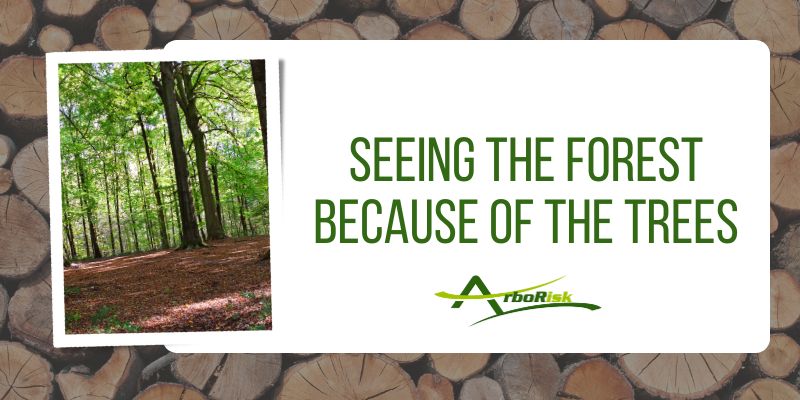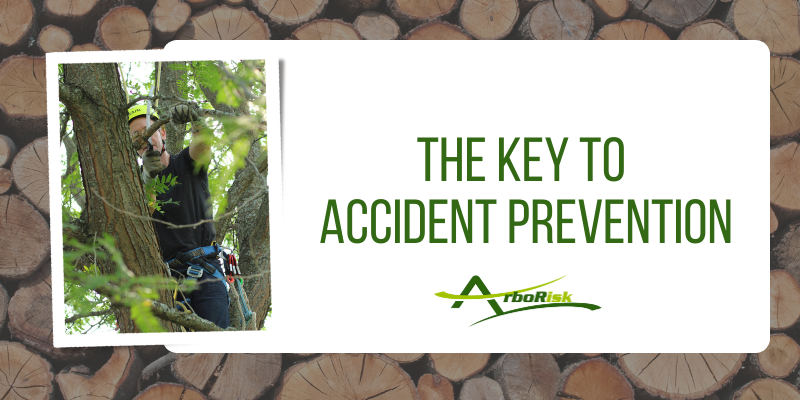Seeing the Forest Because of the Trees
Seeing the Forest
Because of the Trees
Written by Kevin Martlage

In previous articles I have written about using flashlights and mirrors to help develop your personal leadership skills and the leadership culture within your organization. The concept is simple and helps you review things by using two different tools: a flashlight and a mirror. The mirror is used to help you see and reflect on those things as the leader you are doing to grow, sustain, or detract from the impact you are making on your team and organization. The flashlight is used to help those you are leading see a unique perspective or point of view when it comes to their ability to help grow, sustain, or detract from their leadership ability and impact. As a leader it is important that you are using both to help enhance your leadership, while also leading and coaching your team to enhance theirs. Using the two tools together can help you and your team grow while building trust and using intentional communication which are both fundamental building blocks of any supportive and successful business culture.
So where does a leader obtain a flashlight and mirror capable of providing this insight? Additionally, how can you use those tools to help identify the ‘trees’ so that you fully understand the entire ‘forest’? I’m sure you can go down to any local hardware store and pick up a flashlight for $4.99 and a handheld mirror for less than that. Both are very simple to use and do not require any specific instructions other than making sure you put the AA batteries in correctly and you continue to keep your mirror clean, so it reflects properly. Obviously, the idiom of “the forest from the trees” and the concept of flashlights and mirrors are just examples of things that ultimately can help you enhance your ability as a leader. Additionally, I am not expecting anyone to go out and physically buy a flashlight or mirror and immediately things will be “on the right track”. However, there is some power in the understanding of how both can help you navigate your way through the ‘trees’ as you map out the ‘forest’ for your team.
When you are looking at your leadership impact and ultimately your overall business culture, it is sometimes difficult to step back and look at things objectively. This is especially true when you are assessing something like your personal business that you have poured your blood, sweat, and tears into over the years to get you to your current success. Equally difficult is the first time you look in the ‘mirror’ or the ‘flashlight’ shines on something that you suddenly realize may have been impacting things for a long time. Once you come to the realization of identifying some opportunities to advance it then becomes difficult to try and figure out how to advance those things while still staying focused on the day-to-day and other ‘fires’ that may come your way. Ultimately you then become consumed with even more ‘trees’ that you didn’t know existed, which makes the ‘forest’ seem even more daunting and confusing. So how do you navigate through all of this to ensure that your team and your organization are not feeling the same effects and impact you are while ensuring you are growing as a leader? There are many feasible answers, however I feel strongly that finding a trusted advisor or coach is key to sustainable growth and development as a business leader.
As I continued to gain more responsibility and more team members throughout my career I often lost track of the overall bigger picture as I remained focused on the details. Focusing on the details is important, but as a leader you also must stay at a high level as you help your team navigate through the forest, which is your company, their day-to-day responsibilities, and ultimately their personal development. It was not until I joined a company out in New York City that I finally realized how important it was for a leader to have a trusted advisor or coach to help understand the entire ‘forest’.
This trusted advisor helped to shine the flashlight and hold up the mirror so that I could begin to see things a bit differently. Additionally, they helped me to prioritize and delegate the details while empowering my employees to do the same. Without this advisor, I am certain that the overall success of my team and my career would not have been on the same trajectory. I’m sure I would still have been successful, but the journey and my development would have taken a lot longer with the possibility of never reaching the full potential I might have been capable of reaching. There is a possibility that I would still be wandering around the forest as I continued to be lost among the trees, thus causing my team to also be lost.
A leader/trusted advisor relationship can take on many different forms. Ultimately a trusted advisor should be someone you can trust that can help you see things from a different point of view. They should not be afraid to shine the flashlight, hold up the mirror and challenge you as an individual and leader. While it is helpful for this advisor to have some similar industry knowledge it is also beneficial to have someone with an outside perspective that may understand your ‘forest’ and your ‘trees’ from a different business perspective. Trusted advisors can be colleagues, consultants, other business owners or someone you can simply trust to provide you with a different perspective.
If you are interested in continuing to advance your leadership ability and impact through a trusted advisor/coaching approach, my recommendation would be to reach out to us at the Arborisk Thrive team just to have a conversation. Sure, we offer coaching and various services to help you advance as a leader and an organization, but this is 100% NOT an article written as a sales call or advertisement. Rather it is an article written to provide you with a different perspective on how you can continue to focus on your leadership development and ability to lead your team and organization. The conversation will be focused on your thoughts and the direction you would like to take as we help provide some insight and things to consider.
As a consultant I am in the business of positively impacting and supporting people, organizations, and teams on their journey of reaching their full potential. If having a conversation with you about the power of having a trusted advisor or coach is helpful in you pursuing your true purpose, impact, and goals then that is all I can ask. If that conversation identifies the opportunity for a more formal coaching / support relationship with a member of the Arborisk Thrive team then great. If not, then perhaps our conversation helped you to understand your ‘forest’ by identifying one of the ‘trees’ along your path of understanding and success.
If you are interested in having a conversation or learning more about our Thrive program please check out our web site at: https://arboriskinsurance.com/arborisks-thrive/








Recent Comments